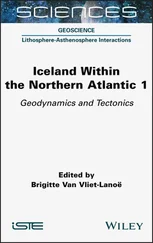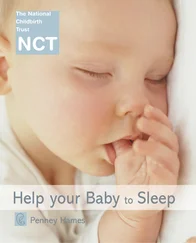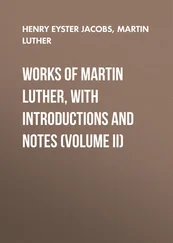Since we have no operating manual — and no keyboard — each of us essentially had to program ourselves, with some help from our parents and others. Despite the best efforts of our parents, much of our programming was somewhat random, and was often the result of accidental events, some supportive and some traumatic. Much of our programming operates reasonably well, while other parts usually don't work well at all.
So another definition of NLP is that it is an operating manual for the human brain, providing "software for wetware," that can be used to reprogram ourselves when we are less than fully satisfied with our responses.
The descriptions given so far may already be more than most people want to read. For those who want a little more specific description of what NLP is, and how it differs from most psychology and psychotherapy, read on… .
The Three Different Aspects of Any Field
We can use the field of knowledge and investigation known as physics as an example for understanding different aspects of NLP. Physics can be divided into three different levels:
1. A practical technology that is devoted to specific applications in the real world, from building bridges, cell phones, and spacecraft, to determining the properties of atoms, viruses, and life itself — and everything in between. This technology takes the form of recipes that tell us what to do to reach particular goals or outcomes — in the same way that a recipe for a cake is a dependable way to achieve that outcome. As Paul Valery said, "The name science should not be given to anything but the aggregate of the recipes that are always successful. All the rest is literature"
2. A methodology or theory, a set of understandings that guide the further development and use of the technology. Methodology consists of all the ideas we have about the technology, how we think it all fits together. As Einstein said, "There is nothing so practical as a good theory"
One basic principle — well established by a wealth of psychological experiments — is that we can't know objective reality, we have only a "map" of reality provided through our senses. This principle was stated by Alfred Korzybski in his book Science and Sanity as, "The map is not the territory." There will always be gaps, errors, and omissions in our map. A map may be very useful and practical, but it can never fully match the reality that it attempts to describe. If it did match, it would be as complete, complex, and puzzling as the reality it describes, and it would no longer be useful as a map.
3. An epistemology, how we know what we know, a way of deciding what evidence to use to use to determine what is true or valid as we test both the technology and methodology. The epistemology of physics is that of scientific experimentation: testing our predictions and results in any way we can, with as many controls as we can. This testing is what distinguishes science from guesses, revelation, or superstition.
The Three Different Aspects of NLP 1. Technology
Like physics, NLP also has a large number of specific patterns, recipes, and instructions that can be used to help people reach specific outcomes. It does this by making changes in our experience — in our perceptions, our thinking, our actions, and our feeling responses to events.
Educational applications include teaching people how to spell accurately, how to learn a foreign language quickly and fluently, how to remember facts and rules, how to be in a positive state to learn easily, and how to transform some kinds of "learning disabilities" into effective thinking and learning, etc.
Psychotherapeutic applications include how to transform unpleasant feelings, change unwanted habits such as smoking, overeating, or nail–biting, how to cure phobias, fears and anxieties, resolve grief, shame, guilt, and other internal conflicts, eliminate addictions, compulsions, PTSD, etc.
Communication applications include how to use language — both denotation and connotation, and both explicit and metaphoric — to sequence and combine information for easy learning, and accurate transmission of that learning to others, how to develop rapport, how to negotiate and resolve conflicts, how to become intimate when you want to, and how to set effective boundaries, etc.
Sports applications include how to be motivated to stay with a training program, concentrate fully on performance and ignore distractions, how to acquire excellence in any sport, how to use the same thought and movement strategies that top athletes use to achieve success, etc.
Business and organizational applications include how to develop creative new alternatives for solving problems, make satisfying decisions, and detailed plans to implement them, how to stay on track in meetings, how to identify and select potential employees and partners who have the skills needed for the team, how to dovetail outcomes, how to manage in a style that matches your company and employees, etc.
NLP has a coherent set of ideas or understandings that can be used to understand the wide–ranging applications of the technology.
One basic understanding in NLP is that all our experience consists of either sensory–based experience in the moment, or internal representations of sensory–based experience that are remembered from the past or forecast into the future. We can't know the world directly, only through the representations of the world that we build out of what we receive through our senses. These representations will always include one or more of the following five sense modalities: visual images, auditory sounds, kinesthetic feelings, olfactory smells, and gustatory tastes. While the last two modalities are very important in food selection, cooking, and certain other contexts like personal hygiene or perfume manufacturing, most of our thinking and responding is some combination of the three major sense modalities, visual, auditory, and kinesthetic.
These sensory modalities are the building blocks, or the "atoms," of all our experience. Even our most abstract words and conceptualizations are composed of some combination of images, sounds or feelings. These different modalities can be combined simultaneously in a moment in time, or they can be combined in a sequence, rather like a linear computer program, in which, for instance, an image of a singer is followed by the song that they are singing, followed by our feelings in response to those sounds. We can learn how to voluntarily rearrange these "atoms" of experience in order to resolve problems, and reach the outcomes that we want. Let's examine one practical application of this methodology, learning how to spell.
Applying the Methodology of Modalities to Technology
Spelling is a simple rote memory task in which the outcome is to be able to access a correct sequence of letters in response to the sound of a word (or in response to an image of what a word indicates). Once that is done, the word can be
written out, or the sequence of letters can be spoken, as in a spelling bee. A poor speller will typically use one of two methods that do not work well:
a) Creative Speller will try to construct a visual image of the word to be spelled, using creative visual imagery, instead of using remembered imagery to visualize the word exactly as they have seen it in the past. Most right–handed people look up to their left to access the right hemisphere of their brain for visual memory, and look up to their right to access the left hemisphere of their brain for creative visualization. Creativity is a wonderful ability to rearrange experience and develop new possibilities, but it is not appropriate for spelling, because spelling is a rote memory task that requires not being creative.
Читать дальше












